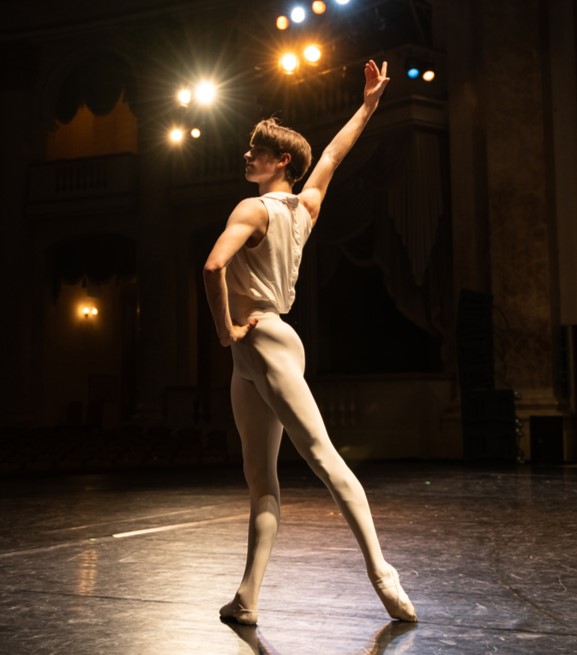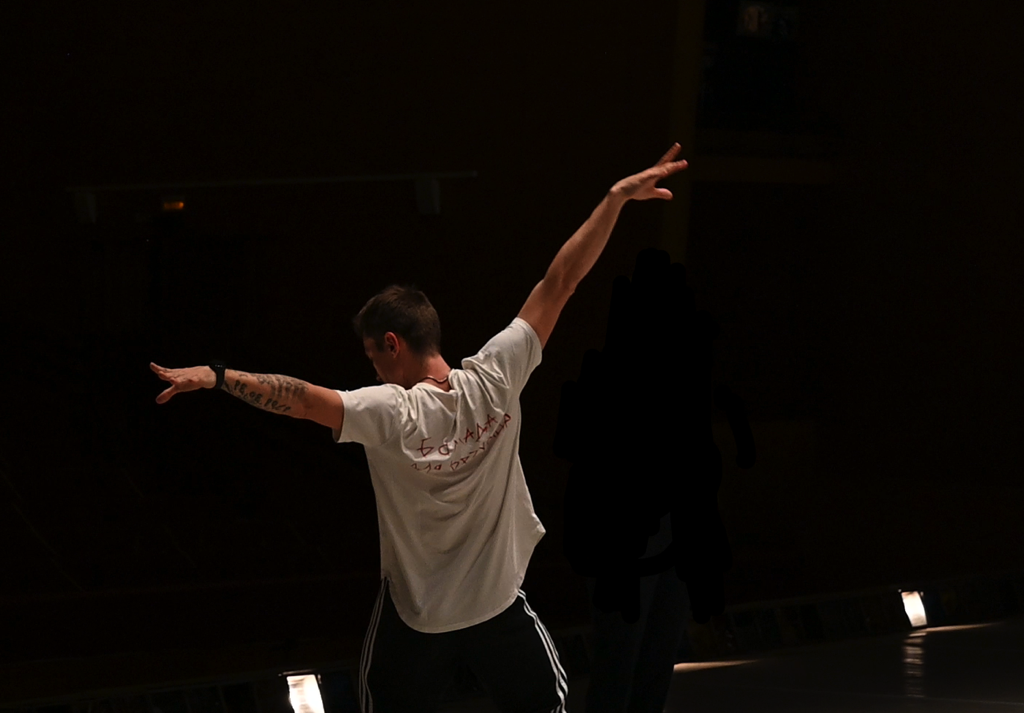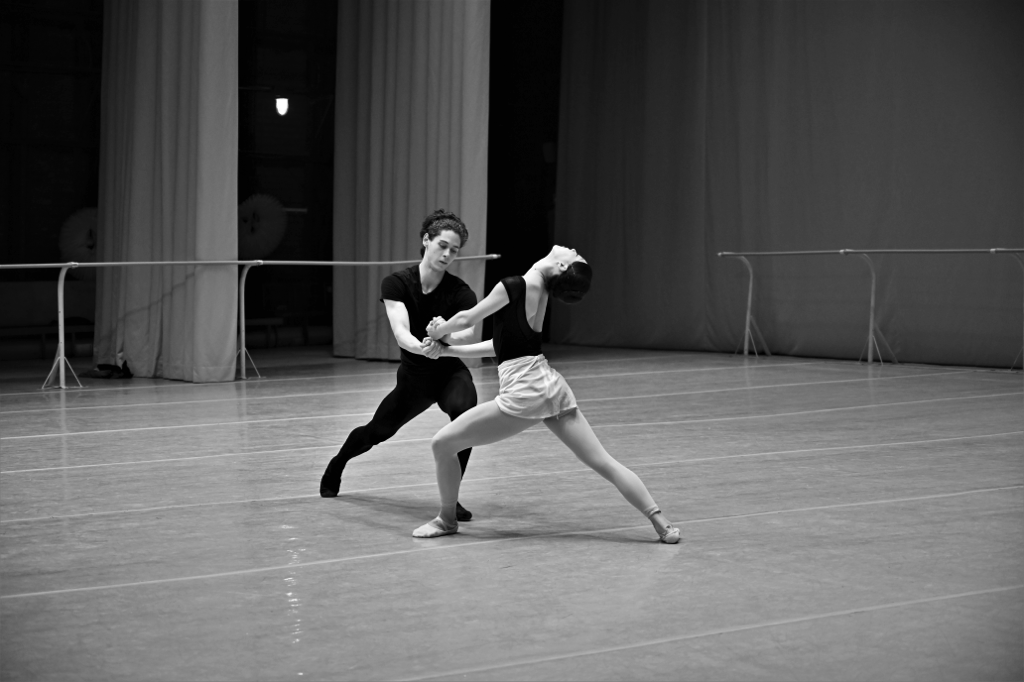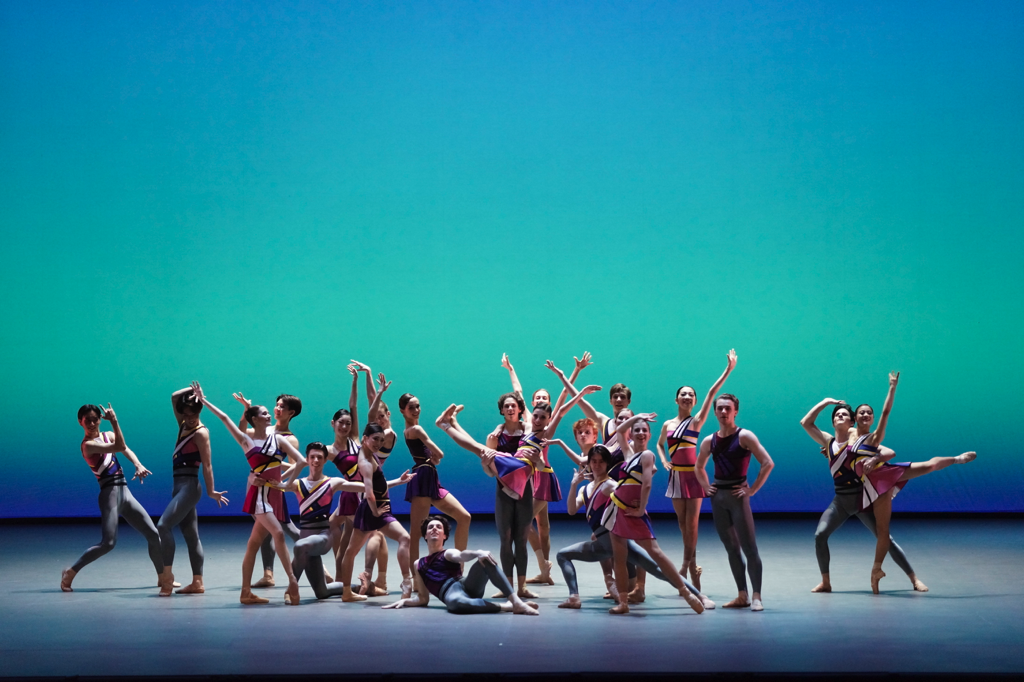

May 28, 2021
Recently, the Academy had a guest from sunny Barcelona – Kirill Radev, the Academy's alumnus, choreographer and founder of the KoRPo Dance Project Company.
Students of the graduating class were most eager to see Kirill, because especially for them, he choreographed a one-act ballet Concerto. Galynin to the music of Piano Concerto No 1 by the 20th century Russian composer German Galynin.
Because of the pandemics, the show had to “stand in the wings” for more than a year. Kirill started rehearsing with students while he was still in Spain, and in mid-May he flew over to Moscow, in order to supervise the rehearsals and personally present his creation to the public.
We approached Kirill Radev with questions about his creation, as well as challenges of contemporary choreography, about things young performers should brave when they work with a choreographer.


Kirill, could you tell us about your creation – the one-act ballet Concerto. Galynin.
I staged a neoclassical ballet, a story comprising three parts with no common plotline. The idea was to thrust the graduating class of the Bolshoi Ballet Academy into spotlight – how they have perfected a variety of dance techniques, how they respond to music in a different manner in each part of the show. I wanted to demonstrate that they are ready to take the next step and move on to professional dance theaters.
In the first part, performers wear soft shoes, in the second – socks, and in the third part girls wear pointe-shoes. The first part is composed in the Art Nouveau manner; it prepares the audience and leads it to the core of the show. In the second part, we move on the contemporary style techniques. The second part is more serious, and there are more pas-de-deux motions. The third part is neoclassical, and the overall stage chemistry is filled with fervor, because performers can break the peace of the stage. This is a show about graduates; it was staged for graduates, and that is the reason the finale is quite emotional.
How did you manage to coach students and rehearse while being thousands of miles away from Moscow?
I used ZOOM. I quite dislike the remote communication format, but remote technologies are tools helping me to be creative and work with performers in distant countries. I asked my students in Spain to perform pieces of the show, recorded their performances and mailed the recordings to the Bolshoi Academy where students of the graduating class studied and learned my pieces with the assistance from Nika Sergeeva, who teaches at the Folk, Historical and Contemporary Dance Department at the Academy. Via the computer, I supervised, commented and corrected.


What was the most challenging part of the endeavor for the students?
I think the most difficult thing was the workload. Constant tension and stress before the exams and graduation gala took their toll. When the schedule is that tight, it is hard to start a new endeavor almost from scratch. I realized that the most important aspect of the rehearsal process is the relay of information to students. You have to show them alternative ways of dancing. You have to make them realize that in addition to the classical and folk dance there is contemporary choreography and that you can achieve impressive results in it and take a look at yourself and your creative activity from a new angle if you take it seriously. Many students managed to present themselves to me in a new light – they “bloomed” in the course of rehearsing. They began to like my choreography, like what they danced. The show itself began to look different. The students discovered the multifaceted world of contemporary dance, which they can also pursue, in order to be creative and successful.
How did you come to modern choreography being a classical dance performer?
I spent my entire life dancing classical pieces. By 30, I had already danced practically the entire classical repertoire. One day, I realized that there is another dimension called “contemporary choreography”. That is when I found myself and my body started breathing, so to speak. I have made, and am still making quite a few discoveries about myself. Even now that I have retired from performing on stage, I still dance when I stage my shows. I internalize all motions, gestures and emotions.
You have coached professional performers many times. How was your experience in coaching students?
Very interesting! They make discoveries about themselves at every rehearsal. I watch that, and their spontaneous reincarnations amaze me.
Seven students from abroad took part in the Concerto. Galynin…
Indeed. We selected students fit for the task both physically and emotionally. The performers’ pool included seven students from Japan. They are very gifted performers capable of comprehending the neoclassical choreography.


What is your advice to students who may discover themselves in modern choreography and want to pursue it further?
My counsel is to absorb as much knowledge as possible and try and learn from different choreographers with different styles. The more the better!
Contemporary dance is a very tricky thing. Unlike the classical dance with its well-defined baseline framework, contemporary dance is hard to define clearly. Contemporary dance has a variety of techniques, including dance theater, physical dance and, even, flying low[i]. The more techniques a performer masters, the better they control their body. I guess, you could refer to contemporary dance as original authorship. The feature of a contemporary dance choreographer is their dance “language”. A performer has a chance to learn new stories and new movements from such choreographers. In contemporary ballet, a performer is a full-fledged participant of the creation process – together with the choreographer they create stories onstage.
My other advice is not to be afraid that contemporary dance might wreck or damage their capacity as classical dance performers. Let me draw an analogy – we already speak Russian, yet we learn foreign languages. Once we start our studies, we get afraid we might forget our mother tongue, because the foreign language will certainly displace it. But that never happens. When we study and learn new things, we increase our assets. When a performer masters a new choreography style, they grow and evolve. Naturally, contemporary dance language will cast an impact upon the classical dance performance techniques – approaches, connecting motions, jumps, etc. But that impact will be positive, because the physical nature of a motion will have become clearer at a totally new level.


Lengthy rehearsals at training classes and the Bolshoi Academy’s theater stage took several weeks. The ballet finally premiered on the Bolshoi Theater’s legendary stage on May 27. The one-act ballet Concerto. Galynin took the entire third part of the 2021 Bolshoi Ballet Academy Graduation Gala.
Both the critics and the audience noted that the show, with its multifaceted music, picturesque stage graphics and dynamic choreography comprising the classical dance language and contemporary dance techniques, became a fresh and bright highlight of the gala.
Text: Elizaveta Emel’kina
Translation: Dmitry Linyaev
[i] Author’s note – FLYING LOW is a contemporary choreography technique whereby a performer interacts with the floor and with space around them.